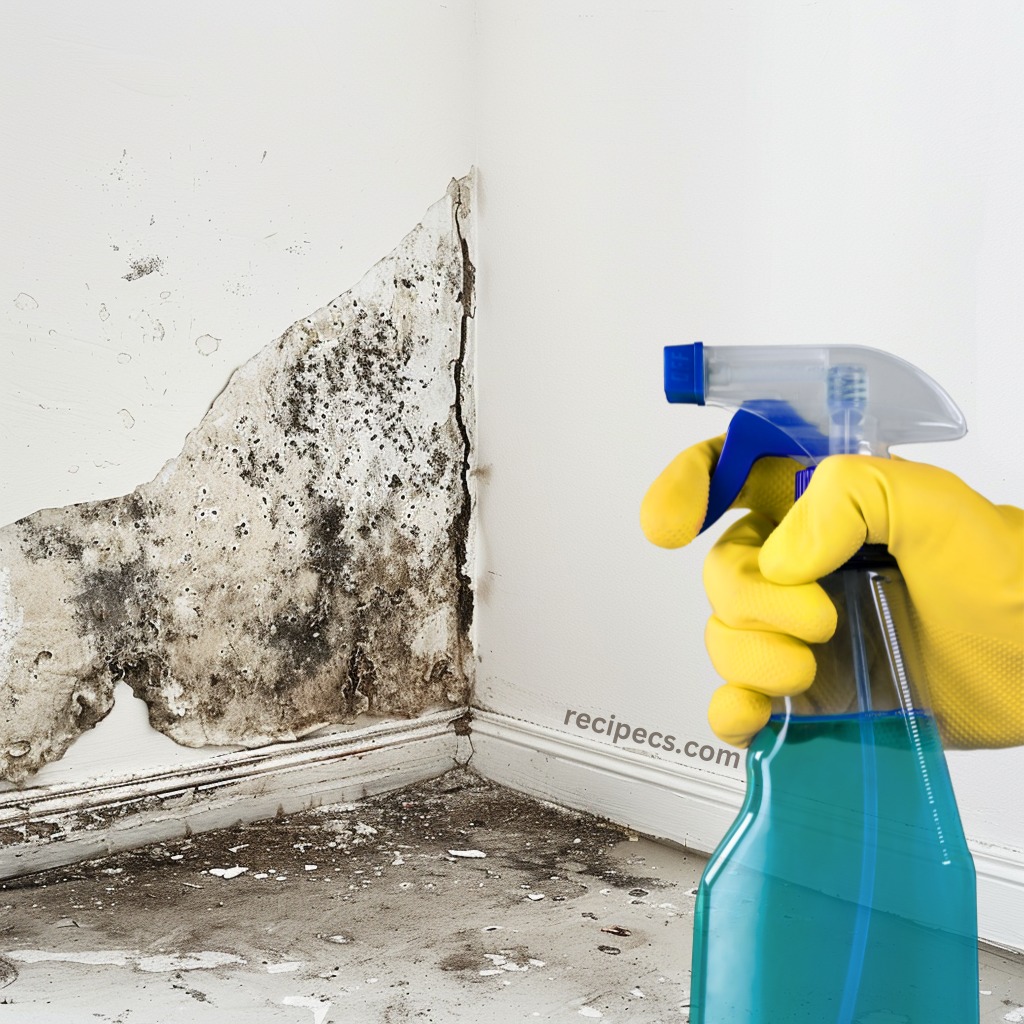Mold can be an unwelcome guest in our homes, creeping into every nook and cranny it finds, especially in areas prone to moisture. It often finds its way into damp spaces like bathrooms, kitchens, or even under carpets, creating not just an unsightly mess but also potential health hazards. I remember my grandmother’s old house, which, despite its charming age, was occasionally plagued by mold. Her methods for tackling this pesky problem were far from modern but surprisingly effective. The way she handled mold with just a few simple ingredients always fascinated me. Now, I’d like to share her time-tested tricks that still hold up today and can help you bid farewell to mold for good.
Understanding Mold Infestation in Homes
Mold thrives in environments where moisture is abundant. It can colonize quickly on surfaces that remain damp, such as bathroom tiles, under sinks, or around windowsills. Older homes, like my grandmother’s, often have unique challenges, including poor ventilation or aged infrastructure that can make mold control even more critical. But regardless of the age of your home, the principles remain the same: address the moisture source and act quickly to eliminate the mold.
Preventive Measures Against Mold
Before diving into the remedies, it’s crucial to tackle mold prevention. Here are a few tips to keep your home mold-free:
Ventilation is Key: Proper ventilation can help prevent mold growth by reducing indoor humidity. Make it a habit to open windows for at least 45 minutes daily to ensure fresh air circulation. If natural ventilation isn’t enough, consider installing mechanical ventilation systems or exhaust fans in areas prone to moisture.
Avoid Indoor Clothes Drying: Drying clothes inside can increase the humidity levels in your home. Whenever possible, use an outdoor clothesline or a dryer that vents to the outside.
Seal Cracks and Insulate: Inspect your home for any cracks or gaps that could let moisture in. Properly sealing these cracks and insulating your home can help prevent mold, particularly during the colder months when condensation is more likely.
How to Eliminate Mold
When it comes to removing mold, you don’t need to rely on expensive commercial products. With two effective methods from my grandmother’s cleaning arsenal, you can address mold problems effectively and affordably.
1. Borax and Vinegar: A Winning Combo
Borax and vinegar are powerful allies in the battle against mold. Borax, a naturally occurring mineral, has antifungal properties, while vinegar is known for its acidity and ability to kill mold spores.
Ingredients:
2 tablespoons of Borax
¼ cup of white vinegar
2 cups of hot water
continued on next page
Instructions:
a. Prepare the Solution: Start by combining 2 tablespoons of Borax with ¼ cup of white vinegar in a spray bottle. Add 2 cups of hot water to the mixture. Hot water helps dissolve the Borax more effectively and enhances its cleaning power.
b. Apply the Mixture: Shake the spray bottle to mix the solution thoroughly. Spray it generously onto mold-prone areas such as bathroom tiles, shower curtains, or under the sink. Make sure the affected areas are thoroughly dampened with the solution.
c. Let It Sit: Allow the mixture to sit for about an hour. This waiting period lets the solution penetrate the mold and begin breaking down the spores.
d. Scrub and Rinse: Using a sponge or scrub brush, scrub the area to remove the mold. For stubborn spots, you may need to apply additional pressure. After scrubbing, rinse the surface with clean water and wipe it dry with a clean cloth.
e. Dry the Area: Ensure the cleaned area is completely dry to prevent mold from returning. You can use a fan or dehumidifier to speed up the drying process.
2. Baking Soda and Soap: Goodbye Mold
Baking soda, a household staple, is not only effective for cleaning but also helps absorb moisture and deodorize. Combined with soap, it can tackle mold efficiently.
Ingredients:
Baking soda
Water
Soap (liquid dish soap works well)
White vinegar
Instructions:
a. Make the Paste: Create a mold-fighting paste by mixing baking soda with a small amount of water. Aim for a thick consistency that you can easily apply to the affected areas.
b. Apply the Paste: Spread the baking soda paste onto the mold spots. Allow it to sit for at least an hour. The baking soda will help lift the mold from the surface.
c. Scrub the Surface: After the paste has had time to work, use a stiff brush or sponge to scrub the moldy area. The abrasiveness of the baking soda combined with the scrubbing action will help remove the mold.
d. Clean with Soap Solution: Prepare a soap solution by mixing liquid dish soap with water. Rinse the area with this solution to remove any remaining mold and baking soda residue.
e. Rinse with Vinegar: For an extra layer of mold protection, rinse the area with a mixture of equal parts white vinegar and water. Vinegar helps kill any remaining mold spores. Wipe the surface dry with a clean cloth.
continued on next page
ADVERTISEMENT

